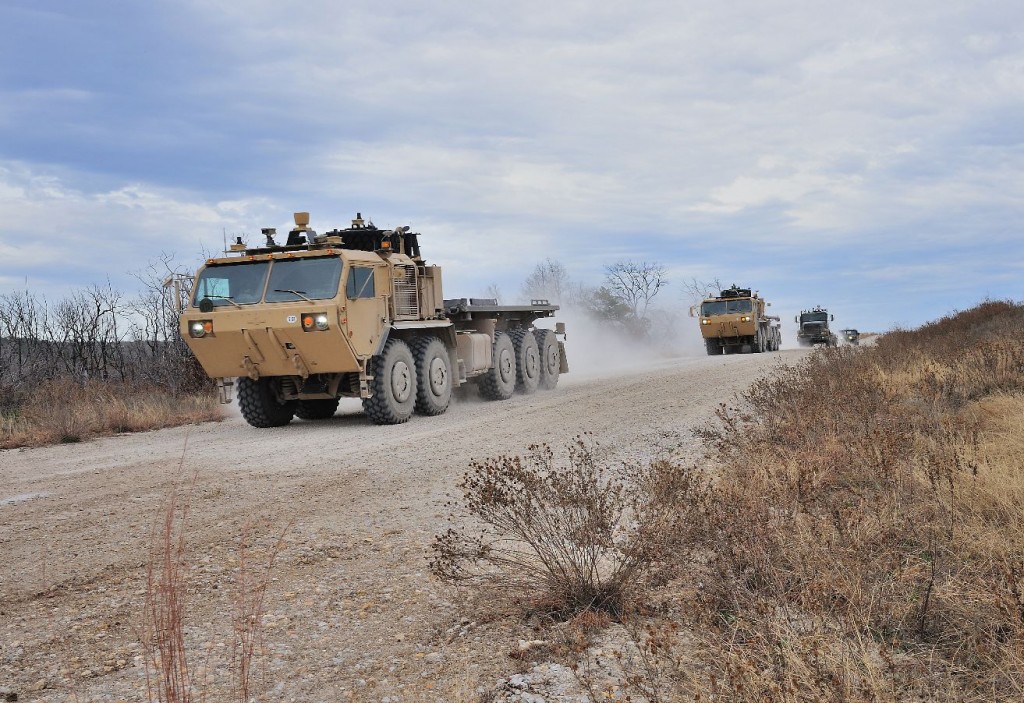A totally autonomous convoy of military vehicles has been successfully tested in Fort Hood, Texas, by the U.S. Army Tank-Automotive Research, Development and Engineering Center (TARDEC) and Lockheed Martin (also see Lockheed Martin press release) . The test included multiple vehicles of different models and was run in an environment, which included hazards and obstacles, such as road intersections, oncoming traffic, stalled and passing vehicles, pedestrians, and traffic circles in both urban and rural test areas. The demonstration, earlier this month, at Fort Hood, Texas was part of the Army and Marine Corps’ Autonomous Mobility Appliqué System (AMAS) program, and marked the completion of the program’s Capabilities Advancement Demonstration (CAD).

The AMAS hardware and software are designed to automate the driving task on current tactical vehicles. The Unmanned Mission Module part of AMAS, which includes a high performance LIDAR sensor, a second GPS receiver, and additional algorithms, is installed as a kit and can be used on virtually any military vehicle. In the CAD demonstration, the kit was integrated onto the Army’s M915 trucks and the Palletized Loading System (PLS) vehicle.
Senior Army leaders, representing the Army Materiel Command (AMC), the Army Capabilities Integration Center (ARCIC), the Combined Arms Support Command (CASCOM), and TARDEC were present to witness the demonstration. The AMAS CAD was jointly funded by ARCIC and Lockheed Martin. While the AMAS JCTD [BP1] is aimed at augmenting the safety and security of human drivers in a convoy mission, the CAD was aimed at completely removing the Soldier from the cab.
Headquartered in Bethesda, Md., Lockheed Martin is a global security and aerospace company that employs approximately 115,000 people worldwide and is principally engaged in the research, design, development, manufacture, integration, and sustainment of advanced technology systems, products, and services. The Corporation’s net sales for 2013 were $45.4 billion.
Headquartered at the U.S. Army Detroit Arsenal in Warren, Mich., TARDEC is a major research, development, and engineering center for the Army Materiel Command’s Research, Development, and Engineering Command and an enterprise partner in the TACOM Life Cycle Management Command. TARDEC is the nation’s laboratory for advanced military automotive technology, and serves as the Ground Systems Integrator for all Department of Defense (DOD) manned and unmanned ground vehicle systems.
The driverless car technology has been tested and improved with numerous competitions, organized by DARPA[BP2] in the last decade. Currently, all commercial auto manufacturers are working on the technology and there have been great advances. In the latest Consumer Electronics Show in Las Vegas last month, Audi demonstrated an autonomous vehicle, which looks like an ordinary vehicle on the outside. This had not been previously achieved, due to the necessity of placement of cameras and sensors outside of the vehicle. Looking at the development of the technology in the last 10 years, which moved from being barely able to go a few miles on an easy terrain to achieving complete autonomous driving in complex situations, there is no doubt that we are getting close to seeing autonomous cars on the streets soon. This is just another technology, like the internet for instance, first used by the military and then moved into our daily lives.

You must be logged in to post a comment Login